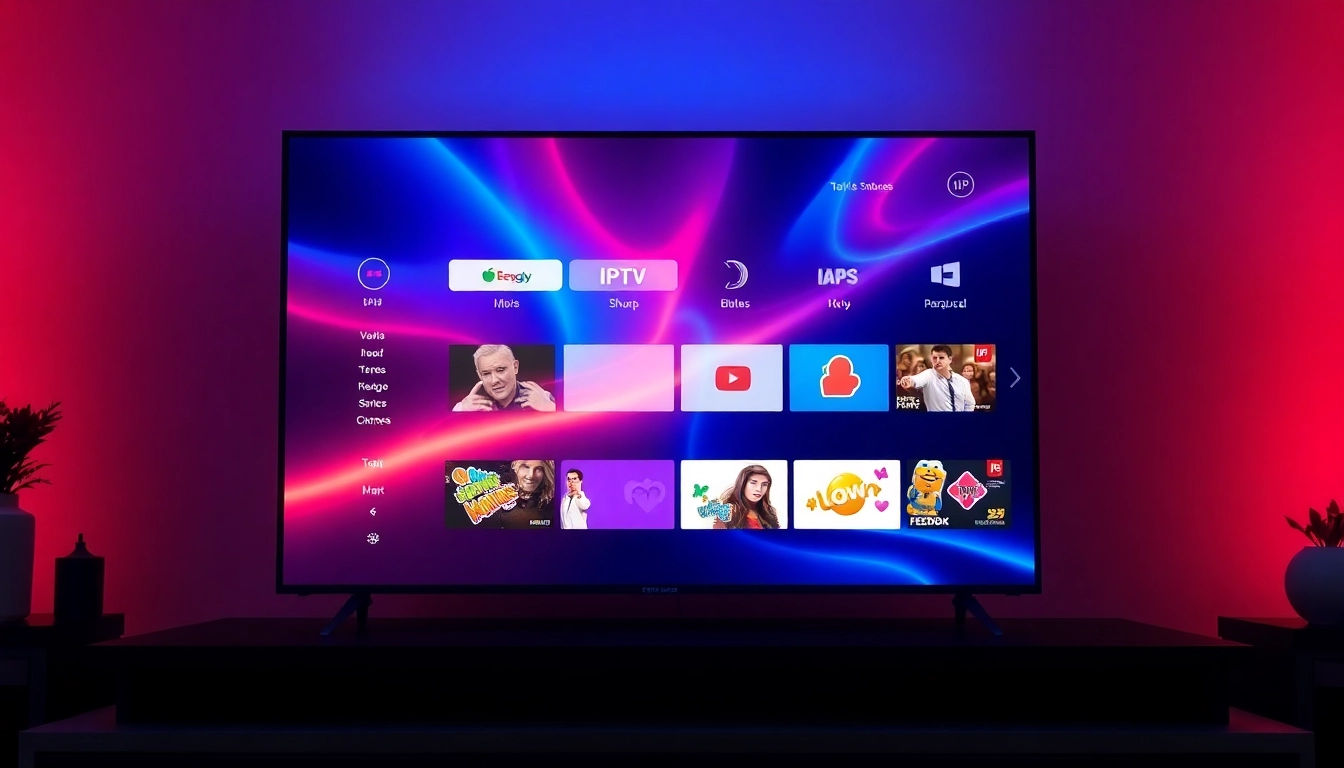Understanding Free Digital Signage Software
What is Free Digital Signage Software?
Free digital signage software is a tool that organizations can utilize to manage and display digital content across various screens, such as monitors, TVs, or digital billboards, without incurring any costs. This software typically allows users to create, schedule, and distribute content from a centralized interface. By leveraging this technology, businesses can enhance communication with their audience, improve brand visibility, and share dynamic content that can evoke immediate responses.
With advances in technology, free digital signage software has become increasingly accessible. Businesses no longer require large budgets to benefit from digital displays; instead, they can start incorporating Free digital signage software into their marketing or internal communication strategies with minimal investment. This democratization of digital signage allows small businesses and large enterprises alike to engage their audience effectively.
Key Features and Benefits
The key to an effective free digital signage software lies in its features. Below are some of the most common and beneficial functionalities.
- User-Friendly Interface: A straightforward dashboard that enables users to create and edit content easily, even without technical expertise.
- Content Scheduling: The ability to schedule posts to go live at specific times, making it convenient to manage campaigns or themed displays.
- Template Designs: Access to various pre-designed templates that help in crafting visually appealing content quickly.
- Multi-Screen Support: Facilitates displaying content simultaneously on multiple screens, essential for businesses with different displaying locations.
- Remote Management: Control displays from any location, allowing updates to content in real-time.
- Support for Multimedia: The ability to incorporate videos, images, and animations to make the content more engaging.
The benefits of utilizing free digital signage software extend beyond mere cost savings. It offers brands the opportunity to conduct real-time marketing, adapt to audience changes promptly, and create a unique viewer experience that resonates with target demographics.
Common Use Cases in Various Industries
Free digital signage software is versatile and can be adapted across various sectors. Here are some prominent applications:
- Retail: Stores can showcase promotions, highlight new arrivals, or run advertisements that increase foot traffic and sales.
- Hospitality: Hotels and restaurants use signage to inform guests of events, promotions, and menus, enhancing the customer experience.
- Education: Schools and universities display announcements, event information, and student achievements through digital signs.
- Healthcare: Clinics utilize digital signage to share health tips, wait times, and patient education, thereby improving service delivery.
- Corporate: Offices employ digital signage for internal communication, displaying employee milestones, company news, and motivational content.
Getting Started with Free Digital Signage Software
Choosing the Right Platform for Your Needs
Choosing the right free digital signage software is a critical step for businesses aiming to implement digital displays effectively. When evaluating platforms, consider the following criteria:
- Ease of Use: Choose software with an intuitive interface that allows users at all skill levels to navigate effortlessly.
- Device Compatibility: Ensure compatibility with the hardware you intend to use, whether it’s smart TVs, tablets, or projectors.
- Customization Options: Look for software that offers a range of templates and flexibility in content creation to align with your brand’s identity.
- Customer Support: A reliable support system can save time and prevent issues in implementation and ongoing management.
- User Reviews and Ratings: Research user experiences to gauge effectiveness and satisfaction with the software.
Setting Up Your First Digital Signage Display
Once you have selected the free digital signage software that fits your needs, the next step is setting up your display. Here’s a step-by-step guide:
- Install the Software: Download and install the software on your device, then create an account if required.
- Connect Your Display: Ensure your digital display is connected either through Wi-Fi or HDMI, depending on your setup.
- Select a Template: Choose a template that matches your message or branding. Customize it with your logos, colors, and fonts.
- Create Content: Use the software’s tools to add images, videos, and text to your display.
- Schedule Your Content: Depending on your campaign or event, schedule when your content should be shown.
- Go Live: Review your display settings and launch your content!
Best Content Strategies for Engagement
Content is the heart of digital signage, and engaging your audience is essential. Here are strategies to ensure your displays capture attention:
- Keep It Simple: Display concise messages that are easy to read and understand quickly.
- Use High-Quality Images: Opt for high-resolution visuals that attract viewers and look professional.
- Incorporate Video: Videos can significantly increase engagement, so use them to tell your brand’s story or showcase products.
- Utilize Calls to Action: Encourage viewers to take action, whether it’s visiting a website, making a purchase, or joining an event.
- Rotate Content: Regularly change your display content to prevent viewer fatigue and maintain audience interest.
Enhancing Your Digital Signage Experience
Customizing Templates for Brand Consistency
One of the significant advantages of using digital signage is the ability to customize templates. This customization is vital for brand consistency across all platforms. Here’s how to customize templates effectively:
- Brand Colors: Use your brand’s color scheme to ensure visual consistency with your other marketing materials.
- Typography: Utilize brand-specific fonts that reflect your identity and resonate with your audience.
- Logos and Images: Incorporate your logo and other brand imagery to enhance recognition.
- Relevant Messaging: Tailor your messages according to your branding voice, ensuring that they align with your overall marketing strategy.
Integrating Multimedia Elements
The integration of multimedia elements is essential for creating engaging digital signage. This involves leveraging various formats, including:
- Animations: Add animations to announcements or promotions to draw attention and make the content lively.
- Sound: While not always necessary, incorporating audio can enhance viewer engagement, particularly in retail settings.
- Social Media Feeds: Display real-time social media updates or customer-generated content to create a sense of community.
- Interactive Content: Explore options for touchscreens that allow users to interact with displays, such as navigating a menu or finding products.
Utilizing Real-Time Data in Displays
Real-time data can significantly enhance the relevancy and impact of your digital signage content. Use real-time data displays for:
- Dynamic Content Updates: Automatically update displays with live information such as weather, stock prices, or event schedules.
- Audience Feedback: Incorporate audience response systems that allow viewers to provide feedback or interact with your content in real time.
- Analytics: Utilize data analytics to understand which content performs best and adjust your strategy accordingly.
Measuring Success of Your Digital Signage Efforts
Key Performance Indicators to Track
To truly understand the impact of your digital signage, tracking KPIs is essential. Here are some critical metrics:
- Engagement Rates: Track viewer interactions, such as clicks or responses to content.
- Impressions: Measure how many times content has been displayed to assess reach.
- Foot Traffic: Monitor changes in foot traffic in retail environments before and after implementing digital signage.
- Sales Data: Analyze sales figures linked to specific displays or promotions to gauge effectiveness.
Analyzing Audience Engagement and Feedback
Understanding your audience’s engagement with the digital signage is vital. Use the following methods to collect and analyze feedback:
- Surveys: Implement quick feedback surveys displayed on the signage encouraging immediate engagement.
- Social Media Monitoring: Track mentions and engagement on social media platforms to gauge audience sentiment regarding your displays.
- Foot Traffic Analysis: Use analytics tools to monitor foot traffic around displays before and after installation.
Adjusting Strategies Based on Data Insights
Adapting your digital signage strategy based on the data collected is key to maximizing its effectiveness. Recommended approaches include:
- Content Variation: Based on engagement rates, experiment with different types of content to find what resonates best.
- Timing Adjustments: Analyze when your audience is most engaged and adjust your content schedule accordingly.
- Deployment Expansion: If displays in certain locations perform well, consider expanding to additional locations based on the data insights.
Future Trends in Digital Signage
Adopting New Technologies for Enhanced Interactivity
Digital signage is continually evolving with new technologies that enhance viewer engagement. Engaging audiences is increasingly reliant on the integration of technology such as:
- Augmented Reality (AR): This technology allows users to interact with digital content overlaid on their real-world environment, enhancing engagement.
- Touchless Technology: Gesture-based controls provide users with the ability to interact without touching screens, increasing hygiene in environments like retail and healthcare.
- AI and Machine Learning: Incorporate AI to analyze customer behavior and tailor display content based on real-time data.
The Role of AI in Digital Signage
AI might be one of the most impactful trends shaping digital signage. It enables businesses to:
- Audience Targeting: Utilize AI algorithms to analyze data and tailor content to specific demographics or audience segments.
- Content Optimization: Employ AI to assess which content performs best, automatically adjusting displays for optimal engagement.
- Predictive Analytics: Predict when customers will engage with displays using historical data, allowing businesses to fine-tune their strategies.
Preparing for Evolving Consumer Expectations
As consumer expectations evolve, brands must remain adaptable. Keeping abreast of trends is crucial for businesses leveraging digital signage. Here are some considerations:
- Personalization: Consumers increasingly expect personalized experiences. Utilize data to deliver tailored content.
- Sustainability: More consumers are focusing on sustainability; consider the environmental impact of your digital signage and promote any relevant initiatives.
- Integration Across Channels: Ensure a cohesive experience across all customer touchpoints—online and offline—to meet evolving expectations in a multi-channel environment.


